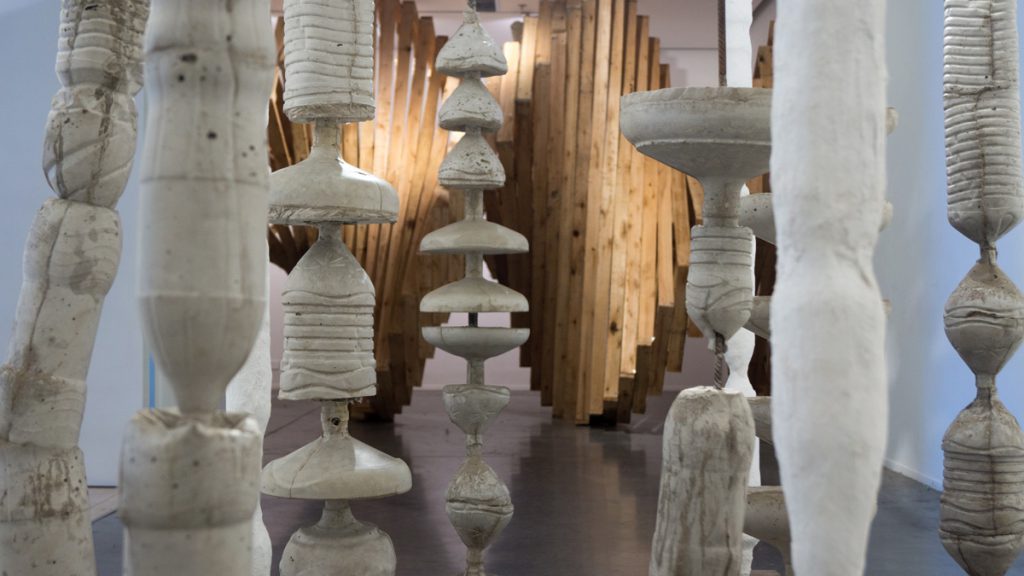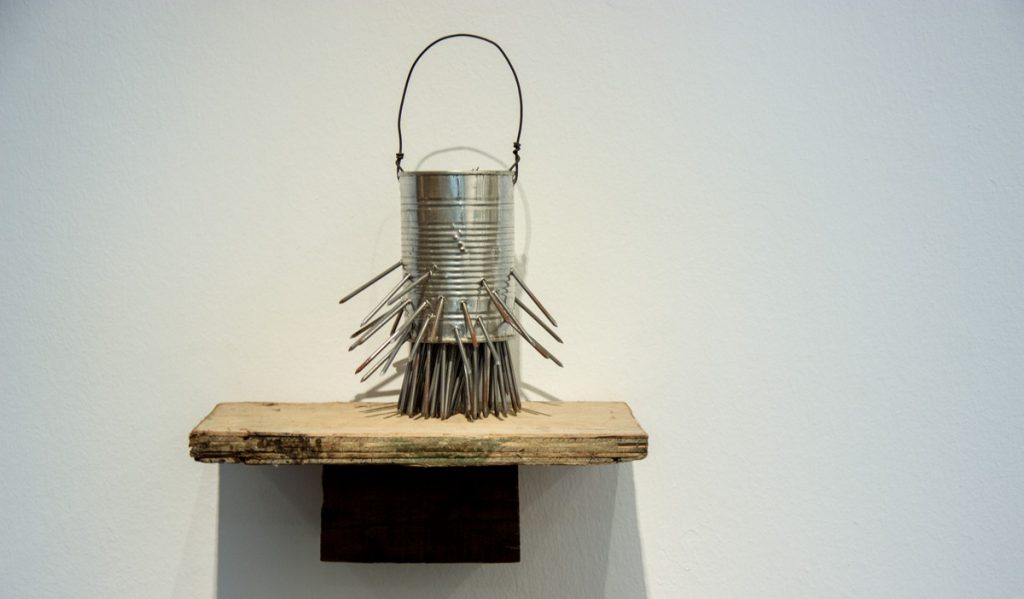During the period prior to the exhibition Luis Terán moved his workshop into the museum where he set about prolonging the life of materials beyond the function for which they were designed. Materials such as plastic bottles were transformed into columns and totems that reference modernist sculpture with the conceptual freedoms offered by contemporary art. “When I started to make the Brancusi, I was thinking about packaging products, which are anatomically made to be used in a certain way but when piled up, organized, are reminiscent of a work by Brancusi that speaks to the essence of man, or the soul,” says the artist. His pieces are families of characters: “I realized that I was building families: here’s the tallest, the shortest, the fat one, the cross-eyed one, the lame one.”
In Last Resorts, Terán, like a demiurge, sought to bring order to chaos and organize space. This was made clear by the large wooden spiral in which the techniques used were left in plain view and the methodology was rigorous if simple: rectangular frames rotate on an axis, creating a formal, optical magic; the wood seems to curve and the cheap construction materials unfold like a drill, the rotation of the planets or a snail shell.
Terán thus managed to create artistic pieces through a theoretical and manual approach that, with paradoxical poetry, creates a wealth of new possibilities.
Luis Terán (Buenos Aires, 1977) studied at the Escuela de Bellas Artes Regina Pacis, where was certified as a National Drawing Teacher in 2000 and Sculpture Teacher in 2002. In 2010 he took part in the Beca Kuitca/Unversidad Torcuato Di Tella. He started to exhibit his work on the local circuit in solo and group shows in 2002. He has exhibited his work in Budapest, as part of a residency at the FKSE; Singapore, on the invitation of the Hermés Foundation; Berlin, at the Lada Project and Río de Janeiro, at A gentil Carioca. He lives and works in Buenos Aires.





